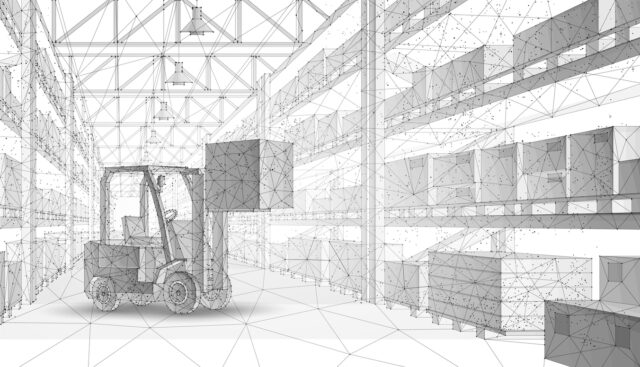When the COVID-19 pandemic hit, worldwide trade was thrown into a state of extreme disarray.
Delays, staff shortages, quarantine regulations, and other headwinds combined with a meteoric rise in e-commerce traffic, placing intense stress on global supply chains. Overnight, waiting lists for container space, along with logistics costs, spiralled out of control. A report by the US International Trade Commission found that container shipping costs “roughly tripled” in 2020 while “experiencing significant volatility.” Worldwide disruption created “bottlenecks in the global trade system” which immediately created shortages across multiple industries and threatened global supply chains.
Just-in-time to just-in-case
One of the reasons the pandemic hit global supply lines so hard was the prevalence of “just-in-time” methodology. The approach was initially pioneered by the Toyota Motor Company. “Just-in-time aims to anticipate demand accurately enough that inventory stocks can be kept low at every stage of the supply chain. Each unit of material or product arrives “just-in-time” for it to be needed by the next point in the chain. This continues from procurement all the way to the end customer. Stockpiles of inventory are kept low, which increases capital liquidity and reduces expenditure on storage.
However, combine this approach with the complex and fragile nature of a sprawling global supply chain, and you have an organisational structure that’s highly vulnerable to disruption. Taking a just-in-time approach to inventory management was suddenly asking for delays, price hikes, and potentially disastrous uncertainty.
A recent McKinsey report notes that, following COVID-19’s disruption of global supply chains, “companies began to ramp up their inventories in response to pandemic-era supply chain disruptions.” Stock levels and inventory buffers were increased to stave off instability, a move which McKinsey notes “led some observers to declare the death of the just-in-time supply chain.”
Dealing with post-pandemic disruption
Four years later, the effects of the pandemic are waning. However, global supply chains are by no means free from disruption.
From geopolitical conflict and economic uncertainty to the worsening effects of the climate crisis, supply chains are increasingly under threat. Resilience is still being touted as a key virtue of today’s supply chains. McKinsey’s data suggests, however, that larger inventories may be falling out of favour.
“We built buffer stocks everywhere during COVID-19. Inventory was the only way we could build resilience at the time,” a surveyed supply chain executive told McKinsey. “Now we are back to competing on cost and capital. Nobody remembers why we had those buffer stocks.”
McKinsey found that a quarter of supply chain leaders have “particularly aggressive inventory reduction goals” for the year ahead. This is especially true in the automotive, aerospace, and defence industries. Here, 32% of supply chain leaders had plans to reduce inventory levels to below pre-pandemic levels. Across all industries, the number of supply chains planning to return to pre-pandemic inventory levels was approximately 50%.
What about the next pandemic?
There’s no denying it. The next big disruption is out there. It could take the form of another pandemic, conflict between nation states, or large scale environmental disaster. Even if another singular event doesn’t occur in the near future, the world faces multiple sources of pressure. Growing ppain points range from the climate crisis to looming civil unrest in multiple countries.
These headwinds threaten to throw unprepared supply chains into disarray in much the same way COVID-19 did if organisations aren’t ready. McKinsey’s report reflects that, four years after the pandemic struck, the question of whether global buffer stocks will rise, fall, or stay constant is “still open.”
“Our survey suggests that inventories remain high, but respondents are divided about their future direction,” they write. The question for supply chain leaders need to answer is: are the short term benefits of returning to a just-in-time model enough to outweigh the consequences when the next worldwide disruption impacts the global supply chain?
- Collaboration & Optimization
- Risk & Resilience










